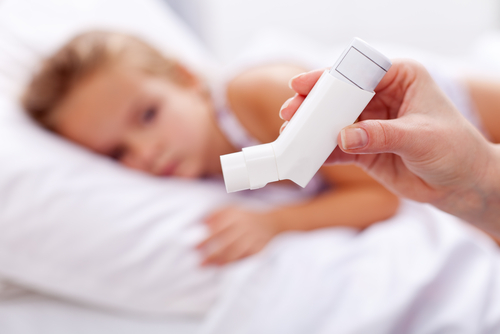Bed covers that are impermeable to house dust mites are effective in reducing asthma flare-ups in children, according to new research.
The study, “Preventing Severe Asthma Exacerbations in Children: A Randomised Trial of Mite Impermeable Bedcovers,” was published in the American Journal of Respiratory and Critical Care Medicine.
Asthma is the most common chronic disease in childhood. Although most children with asthma have their disease controlled through drug therapies, a significant number experience exacerbations (flare-ups), which remain one of the most common reasons for pediatric hospital admissions in the developed world.
Allergen exposure in sensitized asthmatics increases the risk of asthma exacerbation and of hospital admission.
To evaluate the use of house dust mites in impermeable bedding on severe asthma exacerbations in children, Dr. Clare Murray and colleagues randomized mite-sensitized asthmatic children (ages 3-17), following an emergency hospital attendance with an asthma exacerbation, to receive either mite-impermeable or control (placebo) bed covers.
Murray is the clinical senior lecturer at The University of Manchester and consultant respiratory pediatrician at the Royal Manchester Children’s Hospital in the U.K.
A total of 146 children were randomized to use mite-impervious bed covers and 138 use a placebo bed cover. All children were followed for one year.
Researchers found that children sleeping with the mite-proof covers were less likely to have a severe asthma exacerbation that resulted in an emergency visit or hospital admission compared to those in the placebo group (29.3% vs. 41.5%, respectively).
Also, compared to the placebo group, children sleeping with mite-proof covers had a 45% less risk of emergency hospital attendance and the need for treatment with corticosteroids. They also went a significantly longer time to their first exacerbation.
“Asthma exacerbations are among the most common reasons for hospitalizing children living in the developed world,” Murray said in a news release. “It’s a frightening experience for children and their parents, and a single exacerbation can increase the annual cost of treating asthma by three-fold.”
Viral infections are also a major risk factor for asthma exacerbations in children sensitized and exposed to allergens.
“Other studies have shown that these two risk factors act synergistically to increase the likelihood of hospital admission by nearly 20-fold,” Murray said. “We have no means of protecting people from cold viruses, but our study indicates that allergen avoidance may be a cost-effective intervention.”
The researchers calculated that this simple and relatively cheap intervention of mite allergen-impermeable bed encasings, costing around £130 or U.S. $200, is effective in reducing emergency hospital attendance due to severe asthma exacerbations. According to the researchers, the findings indicate that the mite-impermeable bed covers were more likely to benefit younger children living in nonsmoking households and testing positive for only house dust mite allergies.
The mite-proof bed covers, however, did not significantly reduce the number of children whose asthma exacerbation was treated outside the hospital with only an oral corticosteroid, an observation that led Murray to suggest, “It may be that the bed covers did not prevent the exacerbation, but did reduce its severity.”

